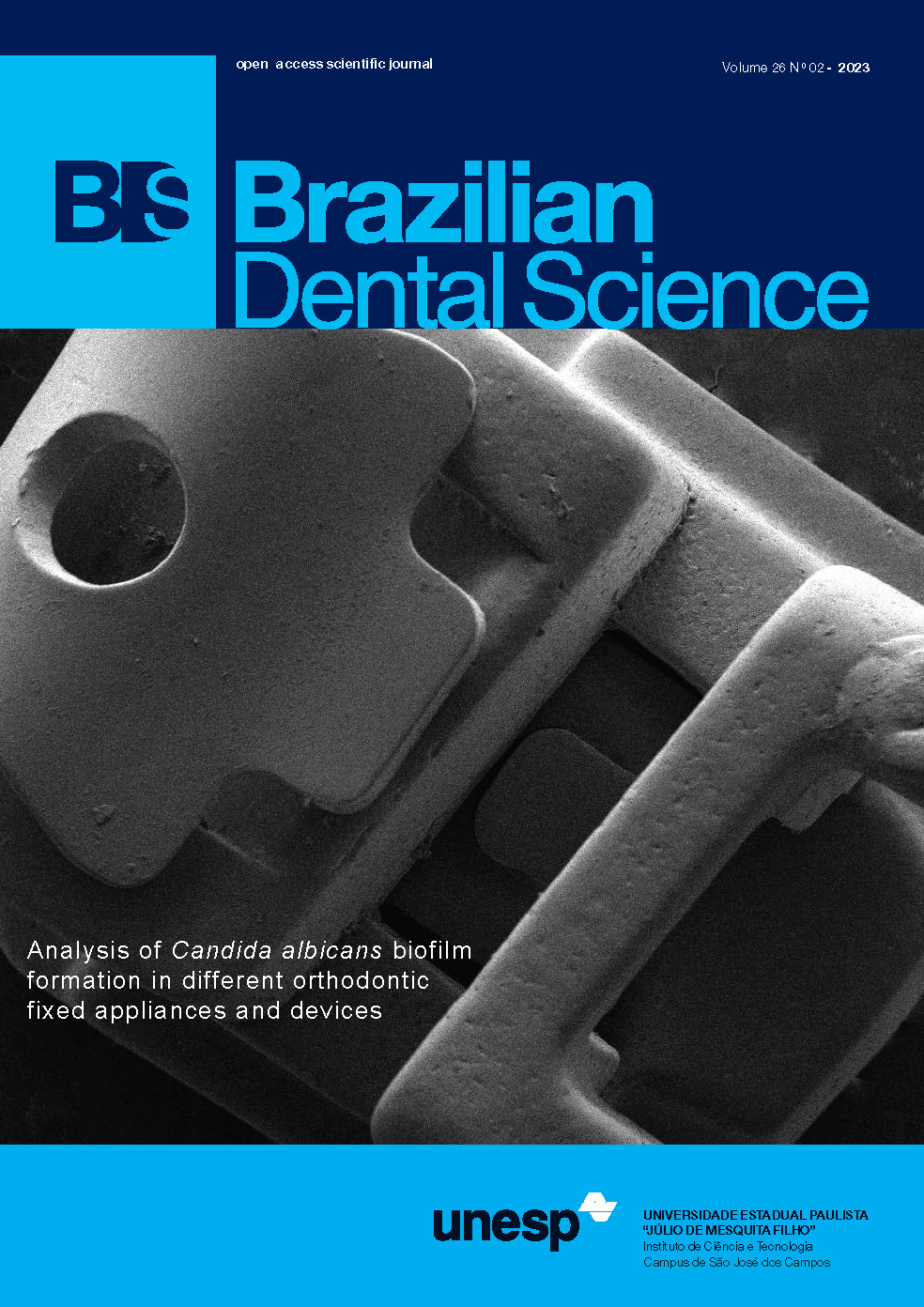The ability of different formulations of artificial saliva to protect dentin from erosive wear
DOI:
https://doi.org/10.4322/bds.2023.e3767Abstract
Objective: Evaluate the protective effect of artificial saliva formulations associated or not with mucin on dentin. Materials and Methods: Bovine dentin specimens were randomly allocated to 10 groups (n = 20) according to the artificial saliva tested and the presence or absence of mucin: Amaechi et al. (1998); Klimek et al. (1982); Vieira et al. (2005) and Eisenburger et al. (2001) and deionized water (control). Samples were submitted to an erosive cycle consisting of two immersions of 120 min in the saliva, followed by 1 min in hydrochloric acid solution, and new storage in saliva for 120 min. Surface loss ( um) was measured before and after the cycle. Data were analyzed using 2-way ANOVA and Tukey’s test (p < 0.05). Results: A significant difference was observed for the saliva formulation but not for the presence of mucin. The deionized water provided the highest surface loss and the Eisenburger’s saliva formulation the lowest. The groups testing the Amaechi, Klimek, and Vieira saliva did not present significant differences. Conclusion: Eisenburger’s saliva formulation provides a higher protective effect against dentin erosion. The presence of mucin did not increase the erosion-preventive effect of artificial saliva formulations.
KEYWORDS
Artificial saliva; Dental erosion; Dental Wear; Profilometry; Surface loss.
Downloads
Published
How to Cite
Issue
Section
License
Brazilian Dental Science uses the Creative Commons (CC-BY 4.0) license, thus preserving the integrity of articles in an open access environment. The journal allows the author to retain publishing rights without restrictions.
=================




























